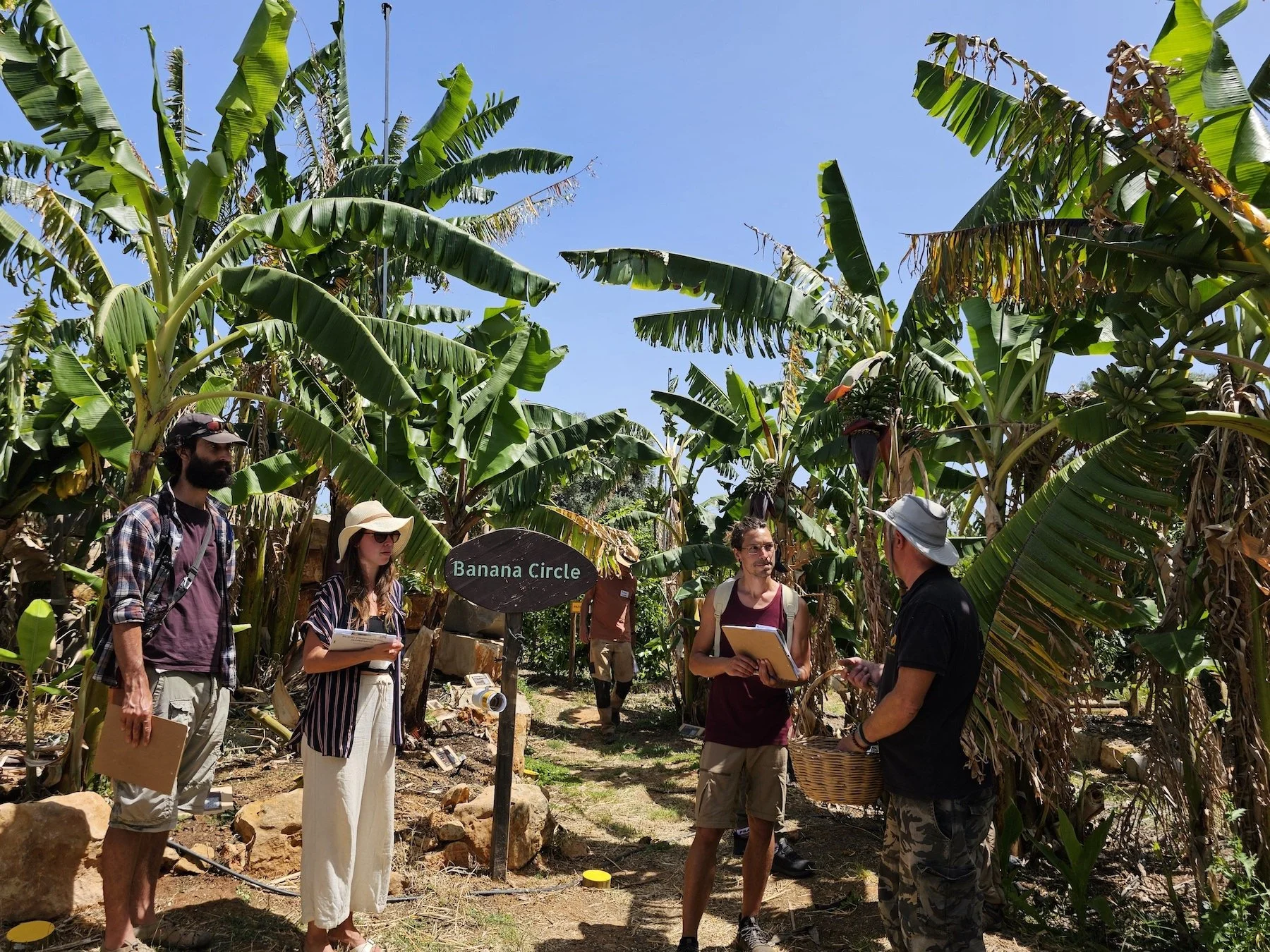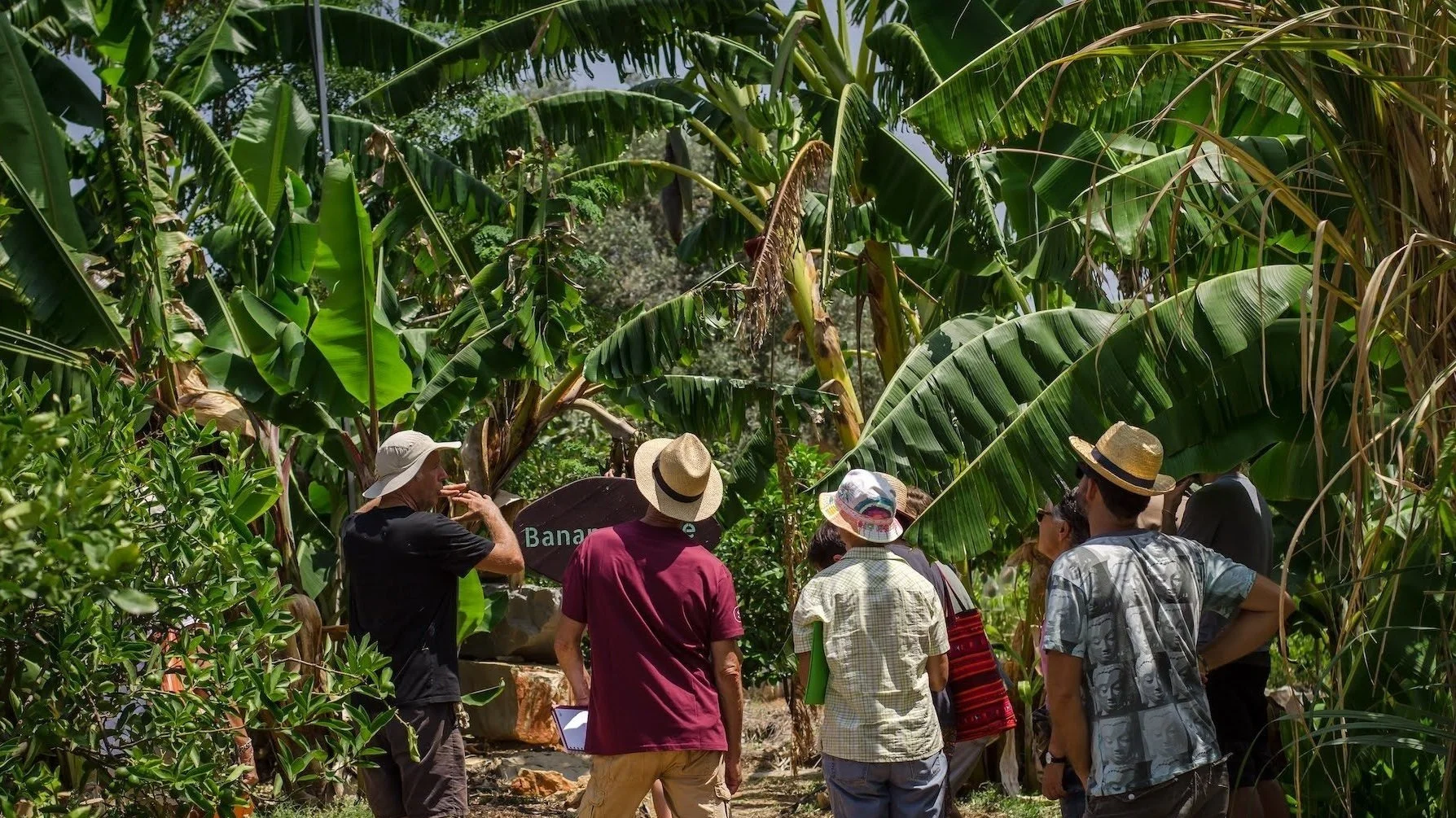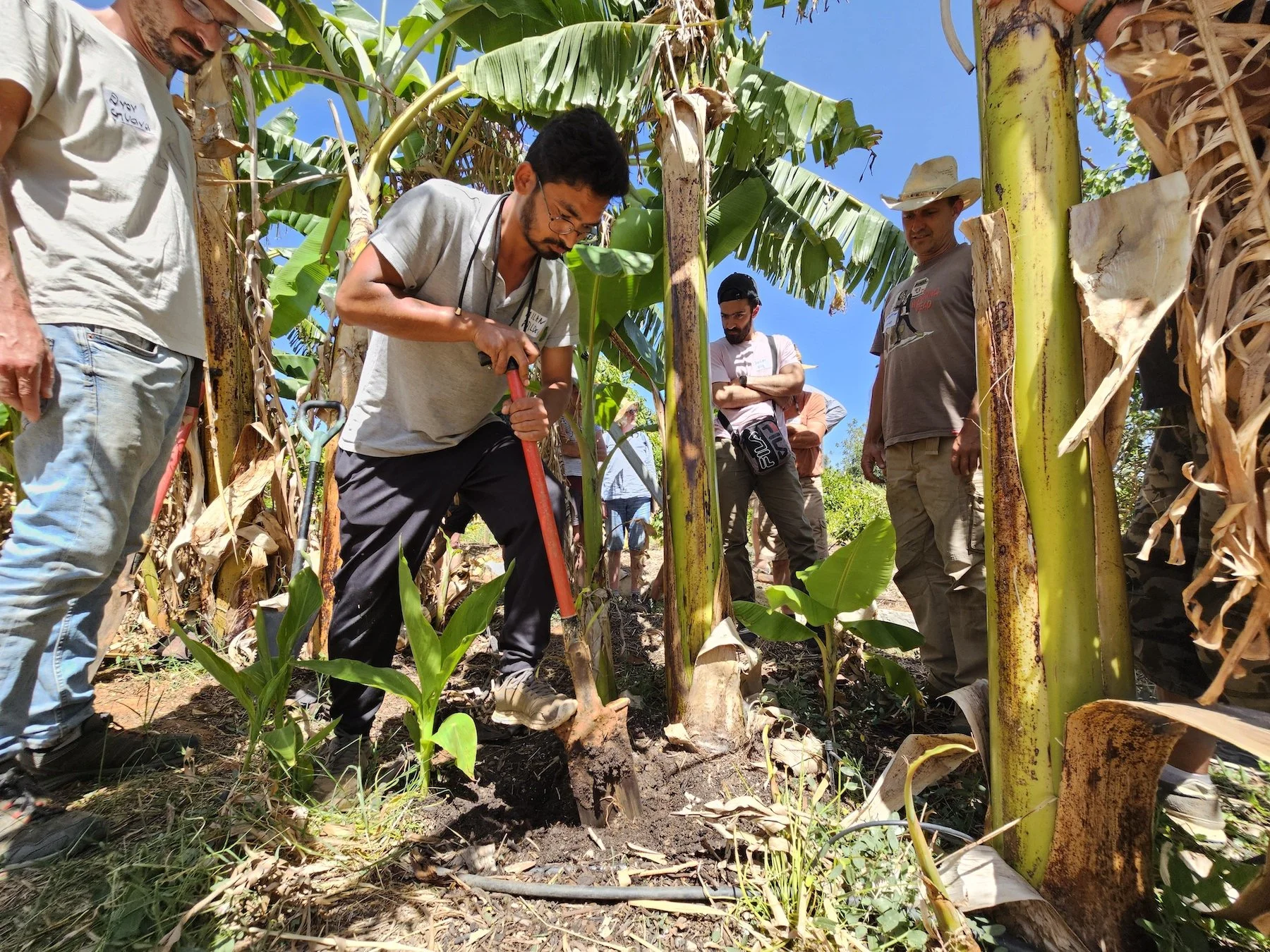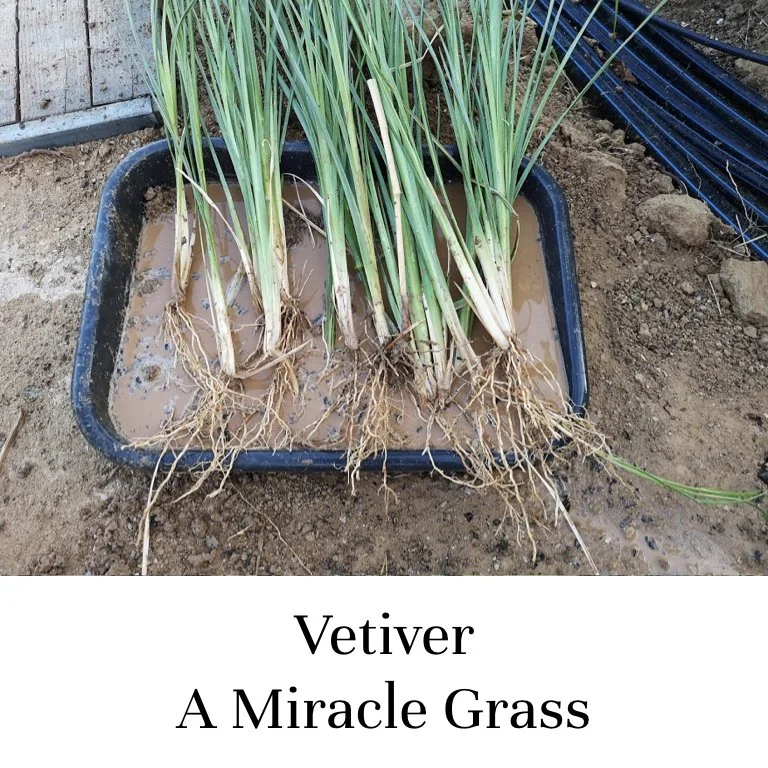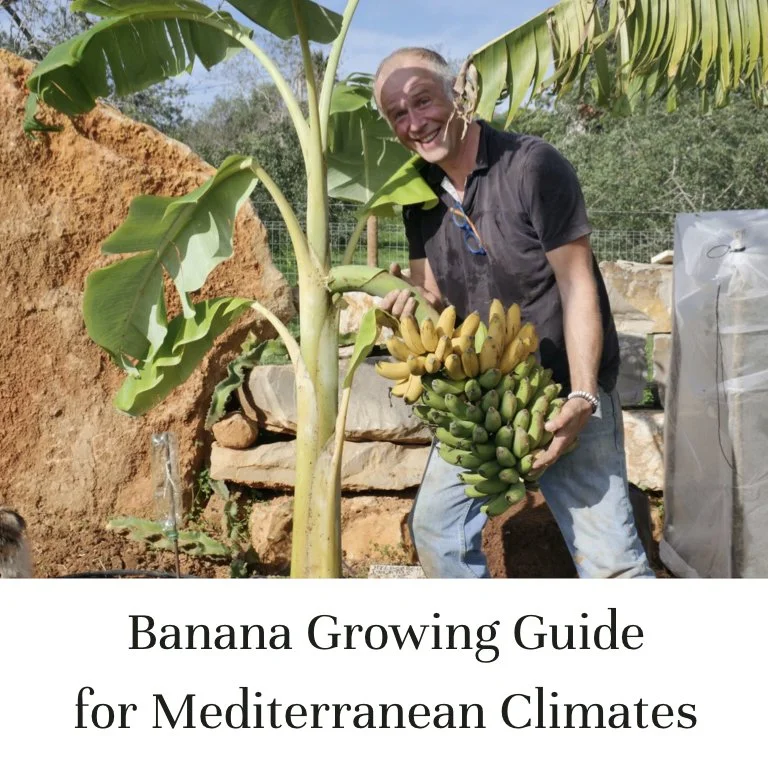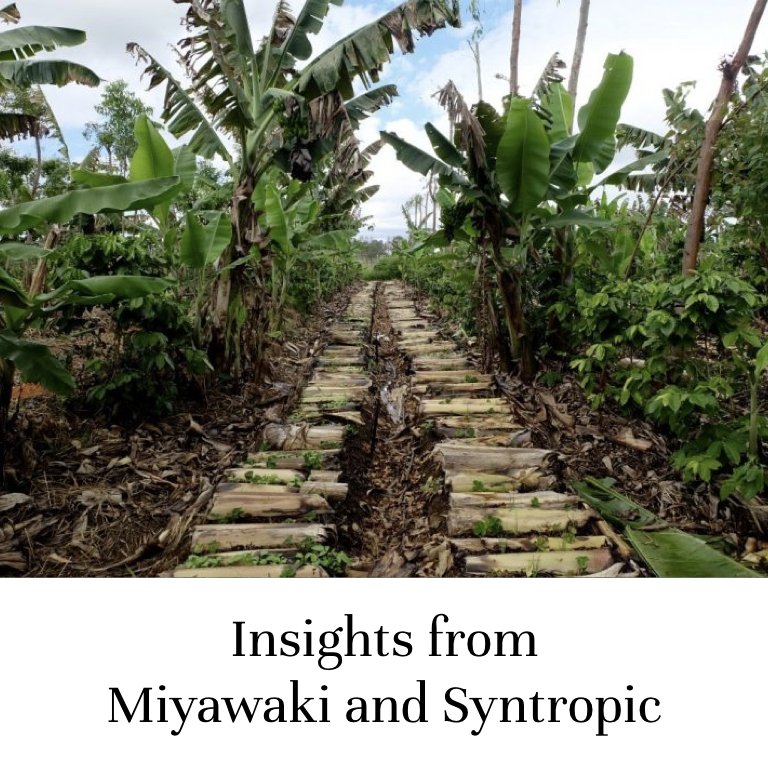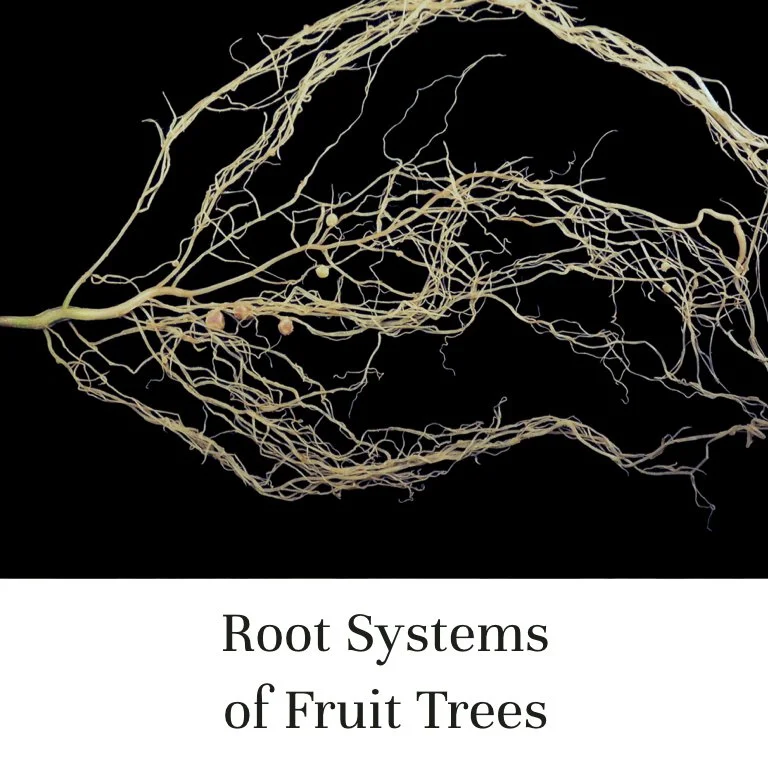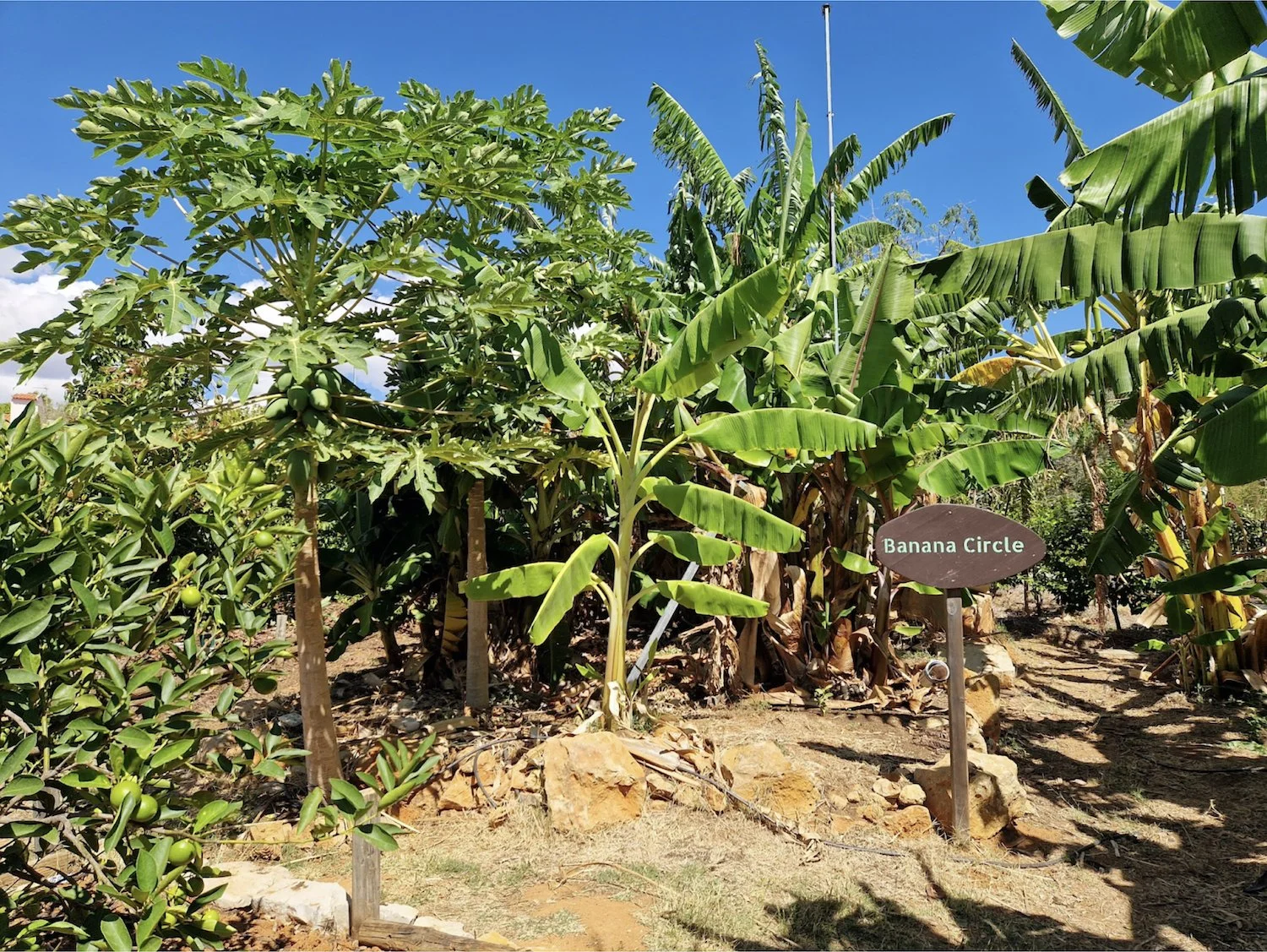Banana Circles
— A true “Island of Fertility” with its ancient roots in Africa
A banana circle is much more than a group of bananas planted in a circle. It is an ancient agricultural technique that has been practiced in various parts of Africa for centuries. Permaculture claims the invention of the banana circle but this is not accurate. We should thank the Africans for this clever agroecological technique.
A banana circle incorporates many functions, many products and many benefits. It is basically an island of fertility built around a big compost pile. Bananas are very hungry plants and will thrive off the abundant cycling of organic material as well as the moisture inherent in its design. Moreover, having a place to throw all your excess plant trimmings is a great convenience!
Banana Circle plant guild diagram, by www.treeyopermacultureedu.com
Multiple Benefits & Functions:
Composting area
Food production
Biomass production
Use of your greywater- from a sink or an outdoor shower right on top
Habitat for wildlife
Creation of a guild (island of fertility)
Beneficial relationships between the different species of plants (the bananas protect the papaya and create shade for other plants)
— this article continues below, please keep reading —
There’s so much to learn about Agroecology and Permaculture!
Make sure to check out some of Orchard of Flavours’ other knowledge articles:
Do it yourself:
The beauty of the banana tree is also very relaxing, giving the feeling you're at a tropical resort, especially when the bananas are flowering/producing!
Step 1: Select an area to use for your banana circle and mark out a circle with 2 meters in diameter. Try to find an area protected from strong winds or build a wind break.
Step 2: Dig out your 2-meter circle as a dish-shaped (concave) hole to a depth of 50cm to 1 meter. Place the soil from the hole around the edge to create a mounded garden bed (ideal width: minimum 70cm; ideal height: minimum 50cm).
Step 3: Fill the pit with organic material. You can add effective microorganisms and manure to the center, making a large compost pile.
Step 4: Plant banana suckers around the rim of the mound at 2-meter intervals. Normally 3 to 4 banana suckers around a 2-meter banana circle. These can initially be interplanted with papayas. Also add cover crops like watermelon, taro, pumpkin, sweet potato, cow peas etc. Lemongrass is also great to use as an erosion controller for your mound not to break down.
Step 5: Mulch very generously to cover and protect the soil and minimize evaporation, and the build-up of organic matter.
Tips for the Mediterranean climate:
In order to improve the banana circle design, we recommend you to build a stone wall on the Northern edge of your banana circle in order to offer some wind protection and to create a big thermal mass which will protect the plant during the colder months. We also recommend planting the papayas against that wall because they are very sensitive.
Varieties of bananas for the Mediteranean countries:
Dwarf Musa Cavendish, Musa Lep Chang Kut (the most frost and wind resistant banana), Musa Dwarf Orinico, Musa Dajiao, Musa Red Dacca (the red banana !).
🍌 Make sure to visit our Banana Growing Guide for Mediterranean Climates to learn even more! 🍌
Mature banana circle at Orchard of Flavours
This article was compiled by Miguel COTTON & Jackson KNIGHTS. If you have any questions or suggestions, do not hesitate to contact us. miguel@orchardofflavours.com




